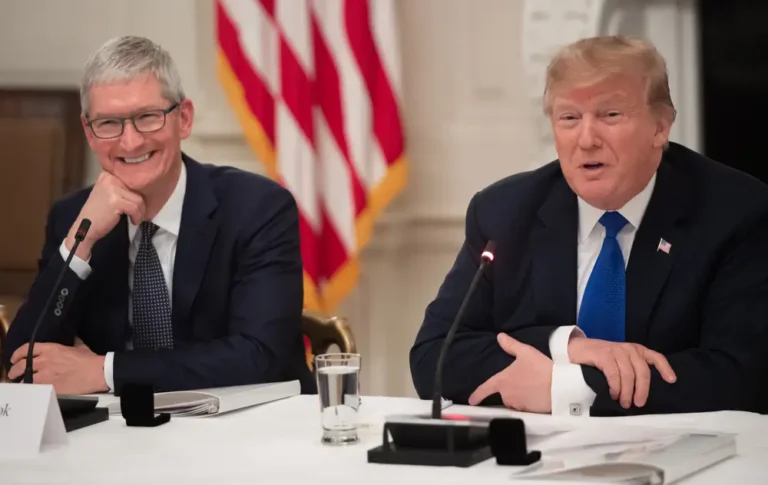Fact check: Do Republican spending cuts threaten federal HIV funding? For some programs, yes

Republicans in Congress are “trying to wipe out federal funding to end the HIV epidemic.”
President Joe Biden on Oct. 14, 2023, in remarks at the 2023 Human Rights Campaign National Dinner.
Are Republicans threatening to withhold federal funds needed to combat one of the world’s most serious public health crises? President Joe Biden said this at a dinner hosted by an LGBTQ+ advocacy group.
“In the United States Congress, extreme MAGA Republicans are trying to undo virtually every bit of progress we’ve made,” Biden said at a Human Rights Campaign event on October 14. “They’re trying to wipe out federal funding to end the HIV epidemic.”
HIV treatment and prevention programs have received bipartisan funding in recent years, according to experts, so Biden’s portrayal marks a significant departure.
When we asked the White House what Biden was referring to, we were directed to reports of House Republican budget recommendations that call for significant cuts to the Ending the HIV Epidemic initiative, a Trump administration-era program designed to reduce new HIV infections in the United States, as well as other programs.
A separate spending plan was approved by the Senate Appropriations Committee. The recommendations will be negotiated as the House and Senate prepare to meet a Nov. 17 deadline to pass another spending bill.
We discovered that, despite Republican recommendations for significant cuts to HIV prevention efforts across a number of public health agencies, the proposal maintains core funding. Meanwhile, partisanship is eroding bipartisan support for global HIV prevention funding.
Despite significant advances in prevention and treatment since HIV was first reported in the United States in the 1980s, the virus remains at epidemic levels in the United States today, with approximately 1.2 million people living with HIV and 30,000 to 35,000 new infections occurring each year. According to experts, cases are increasing in the South and in rural areas, and new infection statistics show that Black and Hispanic populations are being disproportionately affected.
What Are the Proposed Cuts?
According to the AIDS Budget and Appropriations Coalition, a coalition of more than 100 public health advocacy organizations that monitor changes in HIV-related federal spending, the majority of the proposed cuts to domestic HIV funding are the result of House Republicans’ effort to eliminate the Ending the HIV Epidemic initiative.
The program began in 2019 with the goal of lowering new HIV infections in the United States by 75% by 2025 and 90% by 2030. So far, the program has been regional in nature, with funding going to areas with the highest rates of HIV infection.
According to KFF’s funding tracker, approximately $573 million was allocated for the program across various agencies in 2023.
- $220 million in funding for the Centers for Disease Control and Prevention.
- $165 million for the Ryan White HIV/AIDS initiative. (It is managed by the Health Resources and Services Administration and was named after a 13-year-old boy who was diagnosed with HIV in 1984.)
- A $5 million donation to the Indian Health Service.
- $26 million for research at the National Institutes of Health.
- $157.3 million to community health centers, which treat approximately 200,000 HIV patients each year.
As the year 2025 approaches, the program lags behind its targets. “It’s well designed, well planned, and it has logical targets,” said Jeffrey Sturchio, lead researcher on a Center for Strategic and International Studies report.
Sturchio stated that the issue is not one of design but one of funding, adding that “Congress has never fully funded the initiative.”
Sturchio cited a number of “bureaucratic roadblocks” at the local and state levels. Jurisdictions that have gathered sufficient resources have made “tremendous progress,” he says, and overall indicators appear to be moving in the right direction.
COVID-19, on the other hand, reduced HIV testing and may have diverted public health efforts, according to CDC administrators. In April, KFF Health News reported that stakeholders saw progress but were concerned that it would not be enough to meet the 2030 deadline.
Democrats appear to be concerned as well. The Democratic-controlled Senate Appropriations Committee proposed a spending bill that maintained or slightly increased funding levels for all HIV-related programs.The committee asked for more information about the program, citing its “lack of quantifiable data showing outcomes.”
The bill has not yet been passed out of committee in the House. We are aware of some proposed cuts to the bill, which was released in July by the Republican-led House Appropriations Subcommittee.
It proposes a $1.6 billion cut to the CDC, with $220 million cut from “HIV/AIDS, viral hepatitis, sexually transmitted diseases, and tuberculosis prevention” and a $238.5 million cut from the Ryan White HIV/AIDS program. The Ryan White program, which serves more than half of all HIV patients in the United States, provides medical care and support services to low-income HIV patients.
The bill also proposes cutting the Minority HIV/AIDS Fund funding by more than half, from $60 million to $28 million. The fund, according to HIV.gov, supports prevention and care projects that address disparities that affect communities of color.
A committee report that has not been made public contains additional details on how these cuts may affect programs. The report was obtained by PolitiFact and some advocacy organizations, but the House Appropriations Committee did not respond to questions about it.According to the report we saw, all funding for the Ending the HIV Epidemic initiative should be cut.
Furthermore, House Democrats, advocacy groups, and KFF Health News have all reported that the Ryan White program and CDC cuts are the result of a plan to eliminate the Ending the HIV Epidemic initiative.
“If they cut funding, it’s going to have a dramatic and draconian impact on the ability of all of the people who are working in these jurisdictions to improve public health,” said Sturchio, the study’s lead author.
Experts say that while the cuts would be drastic, they would not eliminate all domestic HIV funding.
“There is certainly a demonstration and commitment to some of the core HIV programs, but there are millions of dollars in proposed cuts in other areas,” said Lindsey Dawson, KFF’s associate director for HIV policy. “These cuts would have a meaningful impact on the ability of programs to provide lifesaving interventions for both HIV care and treatment, as well as prevention.”
From fiscal year 2023 to 2024, the CDC’s division of STD prevention would be cut by 16%, the Ryan White HIV/AIDS program would be cut by 9%, and the Minority HIV/AIDS Fund would be cut by 53%.
These funding cuts are only suggestions. They would need to be approved by the full appropriations committee, pass the House, and be negotiated with a Democratic-controlled Senate.
“We’ve long been told that HIV is a bipartisan issue. “What some people forget is that bipartisanship was hard won during the first decade of the HIV epidemic,” Dawson said.
Other Challenges to HIV/AIDS Spending
Meanwhile, the United States’ commitment to global HIV prevention is being questioned. Rep. Chris Smith, R-NJ, questioned the need to reauthorize the President’s Emergency Plan for AIDS Relief, or PEPFAR, without first making some changes. President George W. Bush launched the program in 2003, and it now distributes funds in over 50 countries for HIV testing, prevention, treatment, and medications. It also strengthens health-care systems in the fight against AIDS.
Over the last 20 years, funding for the program has increased to more than $110 billion.According to the program, medical intervention saved 25 million lives.
Smith, the chairman of the House Foreign Affairs Subcommittee on Global Health, has expressed concern about funding for nongovernmental organizations that advocate for abortion rights and access.
The direct use of overseas funding to provide abortions or lobby for abortion access is illegal in the United States. Since 1973, this has been the case. Organizations that receive US funding, on the other hand, can do so with their own non-US funding.
An official from the State Department, which oversees the program, confirmed to PolitiFact that PEPFAR is legally prohibited from funding abortion or lobbying for abortion access; the official cited staff and partner training as well as monitoring procedures to ensure compliance.
Other anti-abortion organizations supported the “Mexico City Policy,” which required foreign nongovernmental organizations to certify that they would not perform or promote abortion with funds from any source in order to be eligible for US government funding. The policy was applied to PEPFAR by Trump, but it was rescinded by Biden.
According to Kellie Moss, KFF’s associate director of global health and HIV policy, the lack of reauthorization would have a significant symbolic impact. “It could make the program more vulnerable during funding discussions without a clear signal of bipartisan support.”
Although reauthorization is stalled, funding has moved forward. The House passed a State Department and Foreign Operations Appropriations bill on September 28 that would fund PEPFAR for another year while instituting a Mexico City-style policy provision on all global health funding. The lapsing provisions would also be extended for another year under this bill.
Our Ruling
Republicans in Congress, according to Biden, are “trying to wipe out federal funding to end the HIV epidemic.”
A House Republican subcommittee has proposed cutting some HIV prevention programs by 53% to 9% in fiscal 2024, depending on the program.
According to a draft report cited by advocacy and policy groups, these cuts are the result of the Trump administration’s elimination of the Ending the HIV Epidemic initiative, though the committee did not respond to questions about this.
These cuts, when combined, would not eliminate — or “wipe out” — all federal domestic HIV spending, but they would represent a significant reduction.
Meanwhile, the House has stalled on reauthorizing PEPFAR, which provides US dollars for global HIV prevention, due to Republican concerns about the positions of organizations that receive the funds on abortion access. The House, on the other hand, has approved one year of PEPFAR funding with some restrictions on how it is distributed, which it can do without reauthorizing the program.
Biden’s statement is partially correct in that House Republicans have proposed significant funding cuts, but he exaggerates by claiming that these efforts would “wipe out” federal funding.
This claim is rated as Half True by us.
(KFF Health News, formerly known as Kaiser Health News (KHN), is a national newsroom that produces in-depth journalism about health issues and is one of the core operating programs of KFF — the independent source for health policy research, polling and journalism.)
©2023 KFF Health News. Distributed by Tribune Content Agency, LLC.





